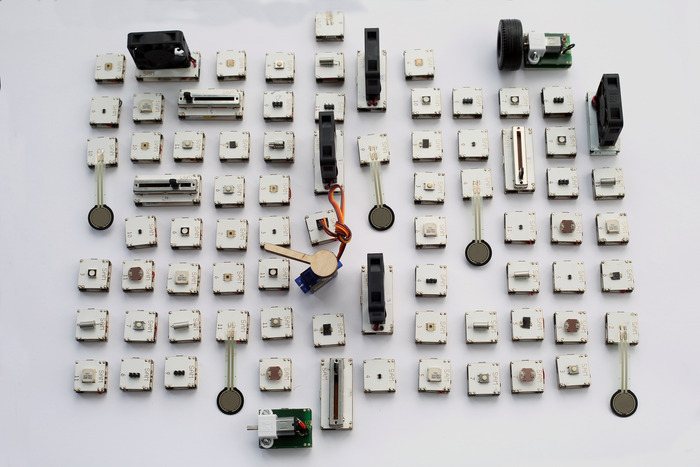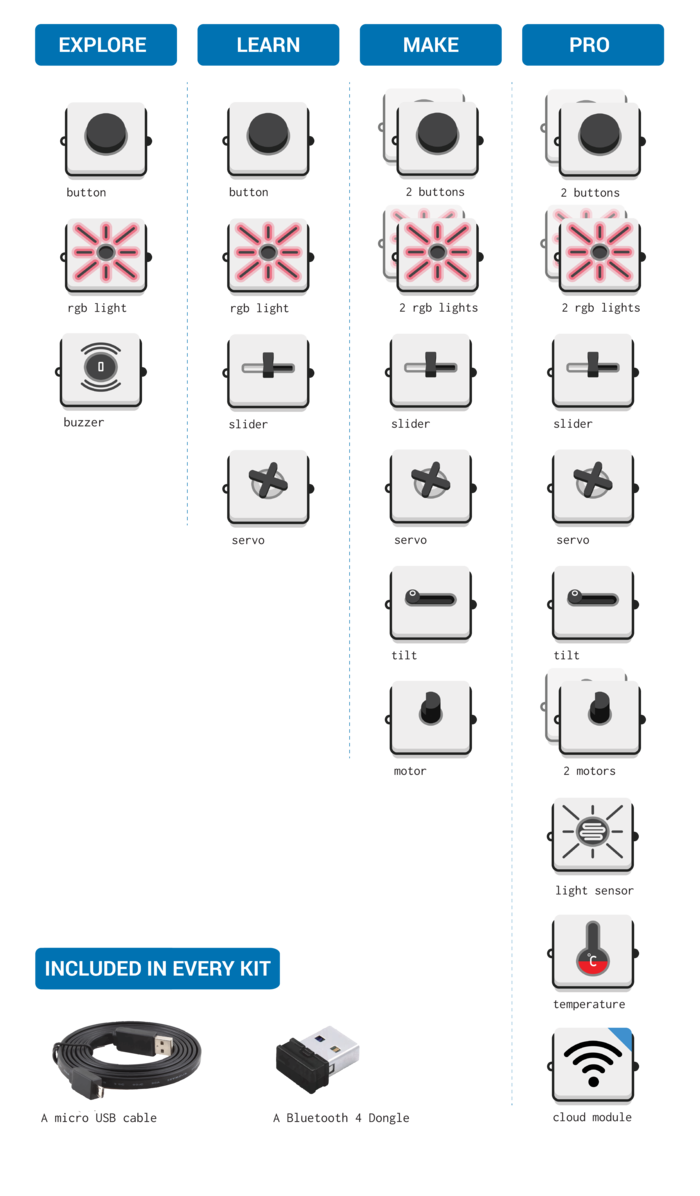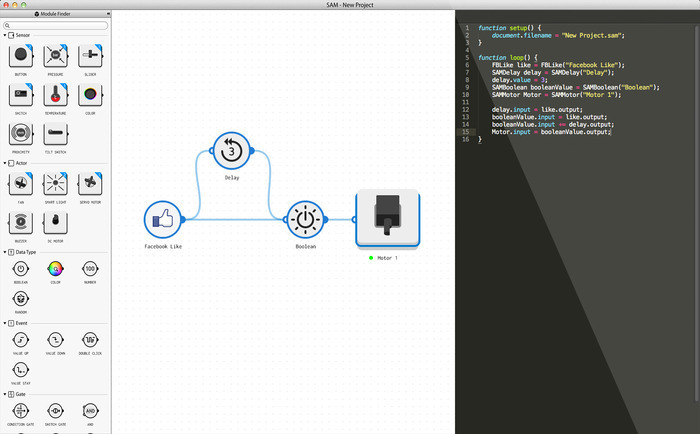SAM: your personal “internet of things”

An electronic kit with a speaker - for the Russian ear - called SAM will allow you to create almost everything you dreamed about: for this you will need Bluetooth-modules and software working on the principle of drag-and-drop. Naturally, the phrase "everything you dreamed about" should not mislead you. Everything is within reason ...
“Today is not yesterday for you,” Vitali Klitschko would say and would be right. In the late Soviet years, beginning electronics enthusiasts had a hard time: on the one hand, the Radio magazine and a network of SUUTs throughout the country (a station for young technicians), and on the other, a long search for the necessary radio components (remember the scene from Ivan Vasilyevich Changes His Profession When Shurik finds the necessary part only from the speculator).
So here. Today, acquaintance with the basics of electronics is mainly held in a “relaxed, friendly atmosphere”: you can find a lot of designers on the market, and a bunch of thematic resources on the Internet.
All the more valuable are new ideas that not only acquaint you with the skills to create your own electronic circuits, but also combine opportunities from different areas. The London startup SAM Labs launched on Kickstarter just such a project, in which there is a bit of electronics, a little bit of engineering and programming.
The electronic designer of the same name is an incredibly flexible set of options for homemade and electronics. “SAM is for those who want to create games, real electronic products, applications and join the Internet of Things,” says the project page. - Beginners will learn about technology, the basics of engineering knowledge and programming. Experienced inventors will be able to accelerate the development of their innovations. ”

Using SAM, you can realize a lot of goodies: remotely control car models and other objects (something like the advanced version of Sphero) through mobile applications, use light and proximity sensors, create smart household appliances and toys, control indoor lighting, etc.
The design kit consists of Sensor Actor Modules (SAM), which exchange information using the Bluetooth Low Energy wireless protocol. Depending on the type of kit, the kit may include buttons and light sources, regulators and servos, motors and data exchange modules with the “cloud”, and, of course, sensors - position, lighting and temperature.
Each of the modules has a built-in battery, which is charged via a microUSB port. The battery life of the modules depends on their type. For example, the button can work up to 3 weeks (with constant use), and the micromotor will need an hour charge after 45 minutes of operation.
“SAM Bluetooth modules can be used for anything: from creating a refrigerator that independently prepares a shopping list to helping skateboarders record and post their tricks on the Internet or equipping a bicycle jacket with warning signals - all this is easily programmed using the SAM application,” says the general SAM Labs Director Joachim Horn. - We want to equalize in the capabilities of those who are developing something innovative and are not related to corporations with their millions of dollars invested in development. And at the same time help children, novice engineers, as well as small and medium-sized companies. ”

Each SAM kit includes a Bluetooth 4 (dongle) module, a microUSB cable, and a free software development application. For ease of development, the software works according to the drag-and-drop principle. Console mode is also supported for experienced programmers.
Kickstarter fundraising ends in two weeks. To date, almost 600 “backers” have invested in the project and it can already be considered successful - with a plan of £ 50 thousand, more than £ 90,000 has been raised. The price of lots starts at £ 55 ($ 90) - for three modules and an application. And one of the most popular was a set of 12 SAM modules. Not without its “professional” options: the £ 350 ($ 570) will cost the same 12 modules, plus a set of all possible modules that the company plans to design by the time the orders are sent in March 2015 (proximity sensor, fan, pressure sensor , potentiometer, vibration motor, buzzer).
A little more about what you can do using SAM:
- games involving remote control;
- doorbells controlled from the telephone;
- elementary security systems;
- musical instruments involving pressure sensors, proximity, lighting;
- “Smart” refrigerator and “smart” shoes;
- toys with Internet access;
- architectural models: houses with smart lighting, sliding doors and automatically closing windows;
- auxiliary software - simply moving individual icons.
SAM Labs ensures that you can gain the following skills:
- electrical engineering: sensor and servo networks, data processing and storage, wireless networks;
- practical programming: everything you create on a computer screen will work offline. And vice versa;
- Internet of things: what is it and what is its use.
The material is based on an article posted on Cnet and the project page on Kickstarter.
